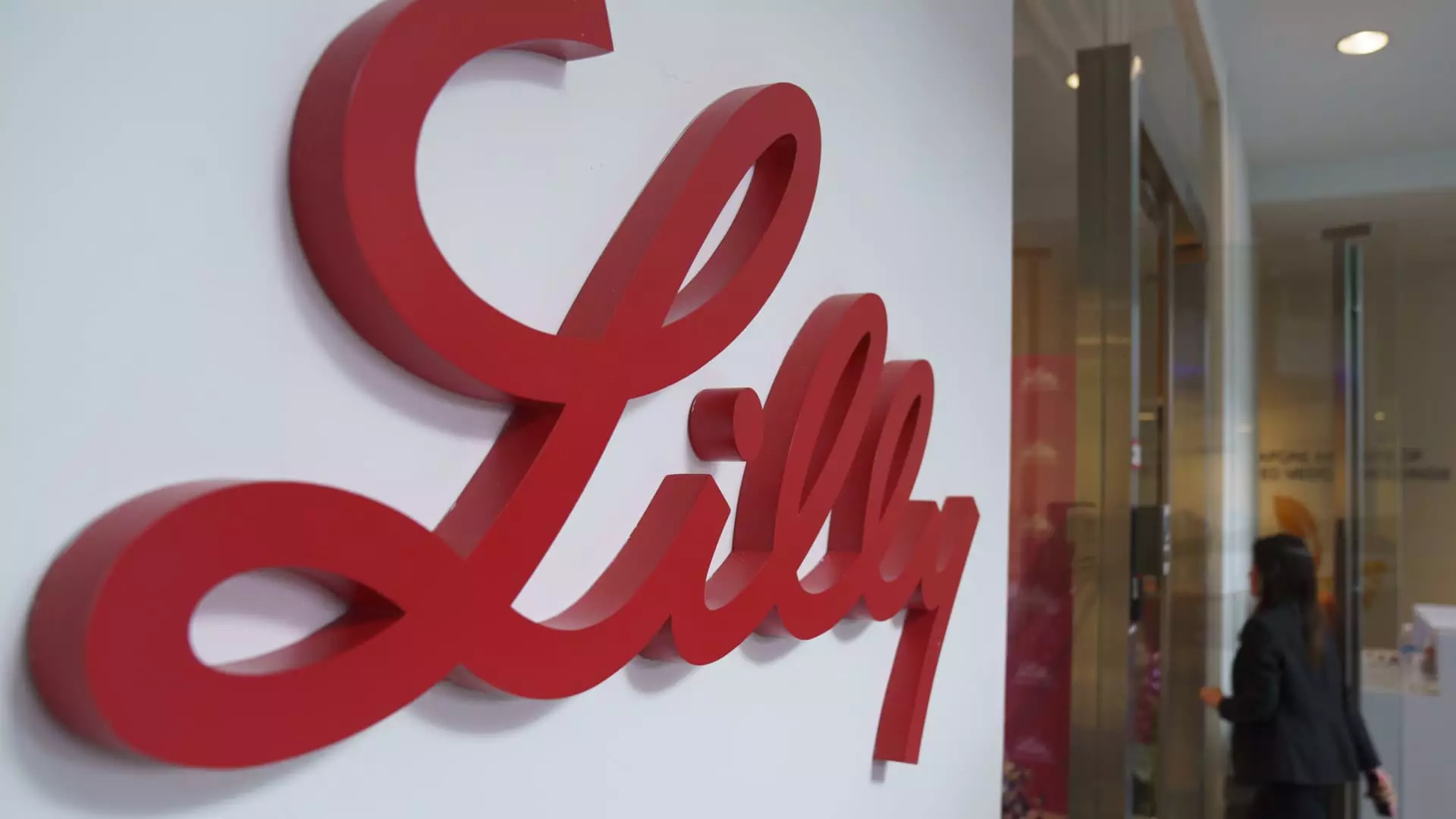Eli Lilly, a prominent player in the pharmaceutical industry, has recently adjusted its full-year revenue forecast, highlighting a significant recalibration in its strategic outlook. On Tuesday, the company lowered its revenue guidance for 2024 to approximately $45 billion, down from previous estimates of $45.4 billion to $46 billion made in October. Despite this downward revision, the projected figure still indicates a remarkable 32% increase from the preceding year, showcasing Eli Lilly’s substantial growth trajectory even amid challenges.
The public reaction to this news was swift and significant, with Eli Lilly’s shares plummeting over 7% during midday trading. This sudden drop underscores the sensitivity of investor sentiment to fluctuating forecasts and raises questions about the company’s ability to meet the high expectations fueled by its ambitious growth plans.
Despite the optimistic revenue growth outlook, Eli Lilly is contending with a reality starkly different from its previous expectations, particularly in the realm of its flagship diabetes treatment, Mounjaro, and its obesity drug, Zepbound. Although demand for these incretin drugs has surged, the market response has not aligned with the expectations set by the company.
To tackle this disparity, Eli Lilly has embarked on a comprehensive initiative to bolster its manufacturing capabilities, investing billions into production enhancements. The Food and Drug Administration (FDA) has confirmed the alleviation of shortages for tirzepatide—an active ingredient in both Mounjaro and Zepbound—which indicates a positive step in addressing supply constraints. However, caution is necessary as Eli Lilly navigates the competitive landscape dominated by other firms such as Novo Nordisk.
Eli Lilly CEO Dave Ricks has expressed confidence in the company’s future, stating that there is “tons of supply coming online” and projecting continued growth momentum. The company plans to expand its manufacturing capacity, expecting to achieve a 60% increase in sellable doses of its incretin drugs in the first half of 2024 compared to the same time in 2023. Ricks emphasized the importance of this growth as Eli Lilly strives to capture a larger share of the burgeoning diabetes and weight loss market.
Additionally, Eli Lilly is actively working on an oral obesity medication, which could present a more patient-friendly alternative to its injectable products. This potential product is anticipated to receive approval by early next year, highlighting Eli Lilly’s commitment to innovation and adapting to market needs.
Amid the challenges and the competitive landscape, Eli Lilly’s long-term prospects remain promising. The company expects sales to reach between $58 billion and $61 billion in the fiscal year 2025. The capacity for growth remains strong, though the recent revenue adjustment reflects the dynamic and sometimes unpredictable nature of the pharmaceutical industry.
Eli Lilly’s ability to navigate these waters, meet market demands, and aggressively innovate will ultimately determine its success in a highly competitive field. It will be crucial for the company to not only meet supply expectations but also deliver on the promise of growth that has so far fueled investor interest and consumer confidence. The coming months will be pivotal as Eli Lilly seeks to stabilize its market position and fulfill the high aspirations set forth by both the company and its stakeholders.


Leave a Reply